We often think of gemstones in terms of the so-called ‘big four’: diamonds, emeralds, sapphires and rubies. These four stones have been traditionally referred to as the ‘precious’ gemstones, all other types being unfairly called the ‘semi-precious’ stones. Nevertheless, across the centuries, many other minerals or mineral varieties have been cut into gemstones or polished into cabochons and used for decorative purposes.
In Scotland, sadly, there are no diamond or emerald deposits and while sapphires are found here and are cut into beautiful stones, rubies are quite rare. But we do have a wealth of semi-precious resources and other minerals that are often cut and polished. Perhaps the most famous is cairngorm. It is a type of smoky quartz and is the only gemstone with a name connection to Scotland. Cairngorm was made popular by Queen Victoria and much jewellery and many other objects from that period were decorated with cairngorms. Garnet, a mineral widely found in Scotland, has also been collected and cut into gemstones, most famously the so-called Elie Rubies collected from the beach at Elie in Fife.
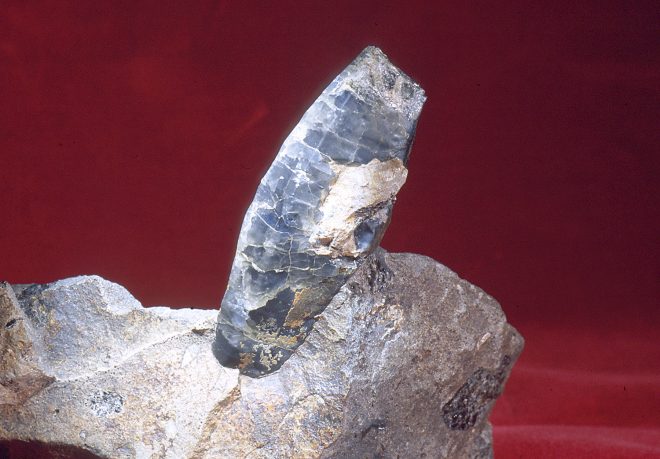
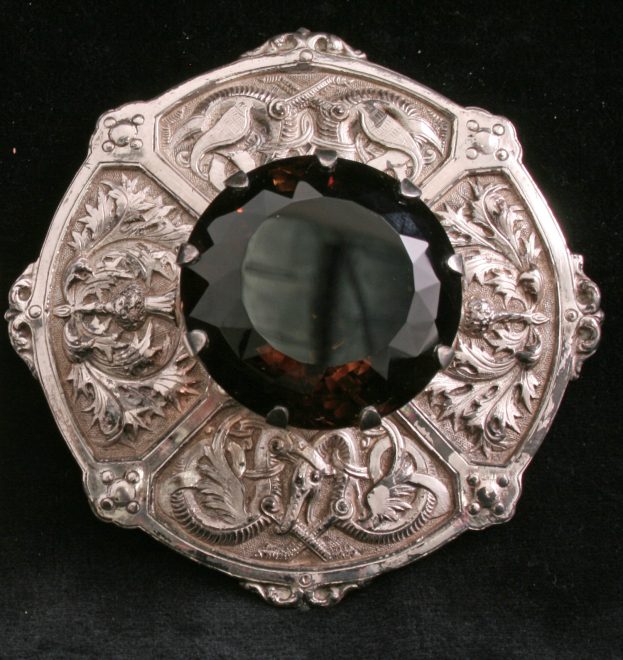
In recent years, there has been a trend to look at much rarer or more unusual minerals as a source of cut stones, and National Museums Scotland has been lucky to have been recently gifted two such stones.
Prehnite
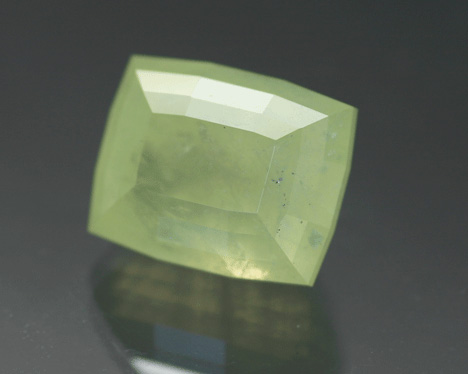
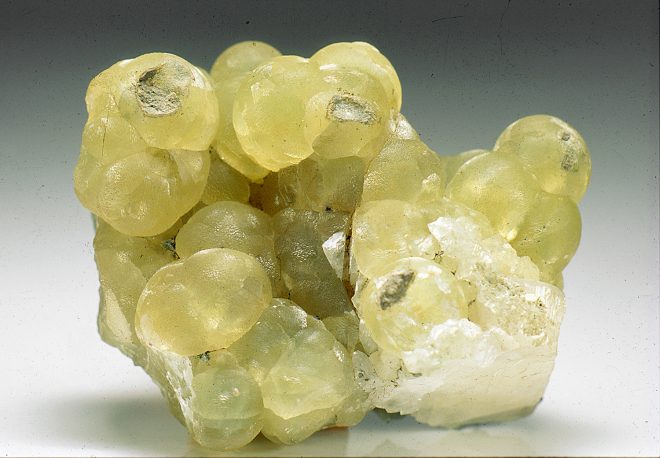
Prehnite is a mineral composed of the elements calcium, aluminium, silicon, oxygen and hydrogen and has the chemical formula: Ca2Al(Al,Si3O10)(OH)2. Although not a particularly rare mineral, Scotland has some excellent occurrences which include not only Boylestone Quarry, where our new piece was collected, but much closer to home on Arthur’s Seat, Corstorphine Hill and Castle Rock, all in Edinburgh. It normally occurs as a pale yellowish green colour but can be clear, blue or yellow.
Although we already have a number of cut prehnite stones, at 10.7 carats (2.14g) this particular specimen is now the largest cut prehnite in the mineral collection. The material was collected by the donor, Dr Jim Houran, a keen mineral collector from Dallas, Texas, from Boylestone Quarry which lies about 1km NW of Barrhead in East Renfrewshire. The quarry, now a Site of Special Scientific Interest (SSSI), is famous for its outstanding examples of prehnite, many of which have been cut into gemstones.
You may never have heard of this mineral but it does have an important place in the history of mineralogy. It was first described in 1788 by the famous German scientist Abraham Gottlob Werner and named after the man who discovered the mineral in South Africa, Colonel Hendrik von Prehn, commander of the Dutch military forces in the Cape Colony. It is the first mineral to be named after a person and is also the first mineral to be described from South Africa.
Harmotome
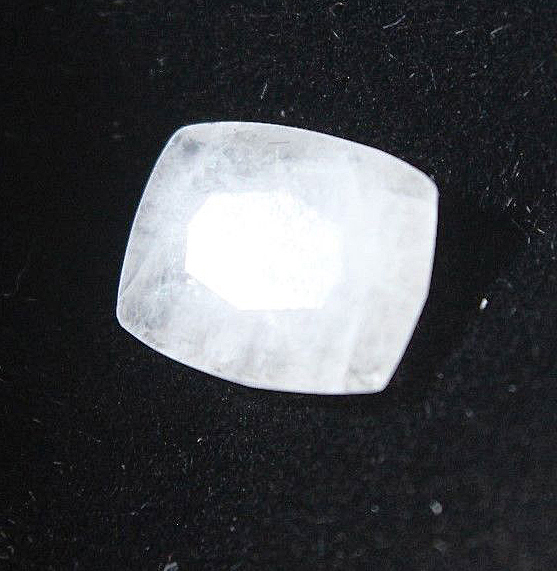
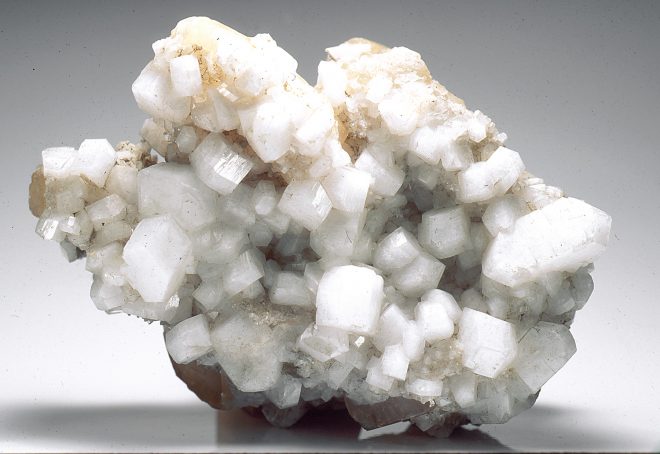
Harmotome is a hydrated barium aluminium silicate and a member of the zeolite family with the chemical formula Ba2(Si12Al4)O32·12H2O. The name derives from two Greek words meaning a cut and a joint. This is a reference to the form and shape of the natural crystals, which often grow as cross-shaped twins. Although harmotome is a relatively rare mineral worldwide, it does occur quite abundantly in Scotland, particularly at Strontian in Argyll. It is also unusual to find it as a cut stone because it is rarely found as transparent crystals and is a bit softer than other gemstones. It is normally white or greyish white but can also be pink, yellow or brown.
It was first described, as ‘Kreuzstein (cross-stone)’ because of its shape, and initially analysed from the mines around St Andreasberg in the Harz Mountains region of Central Germany in 1797 by the mineralogist Martin Heinrich Klaproth, who is also credited with the discovery of the elements uranium, zirconium and cerium. It was later renamed as harmotome by the French scientist René Just Haüy in 1801 to avoid confusion with another mineral with the same name. Although it was found in 1797 in Germany, it was probably known from the lead mines at Strontian from as early as the mid-18th century but was never analysed and researched.
This new acquisition is from Strontian and was collected by the donor. It weighs 4.36 carats (0.872g) and is the only cut harmotome in the mineralogical collection.
